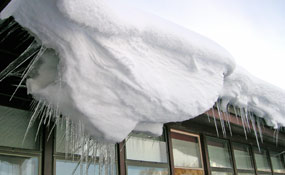 |
 | |
  | |
|
|
|
|
Grand Teton National Park & John D. Rockefeller, Jr. Memorial Parkway
Environmental Factors
|
|
|
|
|
| |
 |
 |
|
 |
On a sunny day the Tetons seem ageless and constant. Stand by a river during the spring run-off and listen to the clack as one stone tumbles over another. Hike a mountain trail in the summer and see the tops of sub-alpine fir broken by an avalanche the previous winter. Watch the clouds build along the crest as you race a thunderstorm down from Paintbrush Divide on a summer afternoon. Witness the re-growth of grasses, wildflowers, and sapling lodgepole pines following a fire. Soon you begin to realize that the park is constantly changing.
Some of these forces are incredibly powerful and their impact is easily and readily observed. Some, however, work on a time-scale that is imperceptible, but change the landscape in no less dramatic a fashion. Some changes are the result of natural processes and some are the result of human actions. It is certain, however, that change is a constant in the Teton Range.
Related Information
Greater Yellowstone Inventory and Monitoring Network
The Greater Yellowstone Inventory and Monitoring Network (GRYN) is one of 32 NPS inventory and monitoring networks created to provide oversight, planning, and consistency in monitoring the long-term health of the nation’s parks. The parks of the GRYN include Yellowstone National Park, Grand Teton National Park, John D. Rockefeller, Jr. Memorial Parkway, and Bighorn Canyon National Recreation Area.
|
|  |  |
|
|

Plan a Safe Visit
Learn about wildlife, driving, weather, and recreational safety in the park.
more... | | 
Trip Planning Guide
Resources for planning your trip to Grand Teton.
more... | | 
Things to know before you visit
Trip planning suggestions, lodging, safety information, weather, accessibility, and pet safety.
more... | |
|
|
|
|
|
|
|
 |
|
Did You Know?
Did you know that the black stripe, or dike, on the face of Mount Moran is 150 feet wide and extends six or seven miles westward? The black dike was once molten magma that squeezed into a crack when the rocks were deep underground, and has since been lifted skyward by movement on the Teton fault.
|
|
|
|
Last Updated: July 25, 2006 at 00:23 EST |










